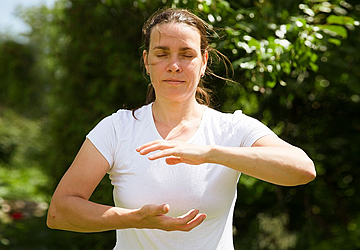When you look online for ways to relieve stress, the most common thoughts that come to mind are deep breathing, going for a walk, or changing your posture. Although this issue is often discussed, there is no one-size-fits-all solution. Sometimes you need to take a different approach to be more effective. So instead of sharing everyday strategies, we delve into little-known but proven strategies for managing stress and promoting relaxation, or looking at standard techniques from a new perspective.
1. Progressive Muscle Relaxation Technique
When you only stretch the core, you target each muscle group and stretch them individually. The first step is to breathe deeply, get in as much oxygen as possible, and start 2-3 head and shoulder exercises. After stretching and cooling down, continue each set until you've worked your calf muscles and feet.
The goal of this strategy is to teach you to target groups of people who need stress relief. Every time you complete the required number of sets, your entire body will relax, because most of the time, a set will stress your whole body muscles.

2. Ancient arts like yoga or tai chi
Stress can lead to high blood pressure and confusion. You need to slow down both, and ancient techniques like tai chi, qigong, and yoga can help you do that. At the heart of these techniques is the use of breath and conscious movement to create balance.
When your body is in sync with your breath, your thoughts and stress are in control, allowing you to relax and have no negative thoughts in your head.
3. Learn to self-massage
We all know how great spas and massage parlors are, but you can't just walk out of these places when you're busy with work or household chores. You can also practice some of these while sitting or working.
You can tap or tap muscles that feel tense, or knead them with gentle pressure or motion. Depending on your muscle density, you can apply more pressure to free up blood vessels and increase blood flow. You can repeat these exercises as often as you need and you can. If you feel comfortable, enlist the help of a colleague or loved one to ease the hard-to-reach places.
4. Hug your loved one, friend, or a tree if you will
Science and tradition have proven that hugging can relieve many stressful situations. The main reason for this relaxation is the release of oxytocin, which is associated with higher levels of well-being in humans. So why not use this chemical free? Plus, it helps reduce stress and anxiety, especially stress hormones like norepinephrine.
We encourage you to make it a habit to greet colleagues with a hug during daily meetings, which is common in most cultures. It might seem awkward to them at first, but eventually it becomes part of the daily ritual.
5. Practice prayer
This strategy works wonders for religious or spiritual people who follow a particular method or religion. Close your eyes, maintain a relaxed posture, and repeat the prayers from your favorite chapter at least twice a day for 5-10 minutes each time. You can combine some of these techniques to get the most bang for your buck, or depending on which tune works best for you.
6. Relaxation strategies take practice to master
We all know that any habit or skill you want to learn and master requires repeated practice day in and day out. So pick your favorite relaxation strategies and techniques and make it a habit.
You won't feel much relief at first, either because your body isn't adapting or you're not doing the exercise correctly. As time goes on, you will feel more and more relaxed. No matter how much stress you feel after a while, you know you can ease it with the techniques you've mastered.
7. Add mindfulness to your meditations
What is the difference between regular meditation and extra mindfulness? Regular meditation involves breathing exercises for stress relief and relaxation. In order to be mindful during meditation, you need to focus on the present moment. Not just in actions or problems, but in ignoring past and future possibilities.
You focus on the present moment and how you can improve your situation. You can also practice during other activities, such as at work, on a walk, or even before bed.

8. Aromatherapy to refresh your mind
Using salves and candles is the easiest solution to make your environment not only normal but also fresh. Even if you use a generic store air freshener, the smell can easily change your brain activity and relax you. Experiment with smaller packs to see what calms you down the most. Then start switching between your favorites to keep your presence alive.
9. Rhythmic movement training
In order to relax, it is best to choose swimming, jogging, rowing and other rhythmic exercises for the body. Have you ever wondered why babies fall asleep as soon as they move rhythmically, whether in a parent's arms or in a rocker?
Focusing on maintaining the rhythm of your practice will slowly free you from thoughts that cause more stress than the problems themselves. Remember, rhythmic practice can also help you achieve mindfulness, just as you can do tai chi and other similar exercises.
10. Express gratitude and be thankful for what you have
Although it's last on our list, it's one of the least practiced stress reduction strategies. While certain areas of life stress us out more than they should, there are many other things that we ignore that give us motivation.
One of the assets to be grateful for is friends and family. Even having a friend to talk to can do wonders. They have food every day, they have jobs, and they work hard to earn more money. Even small things like enjoying a change in the weather can help us forget about the things that stress us out.



